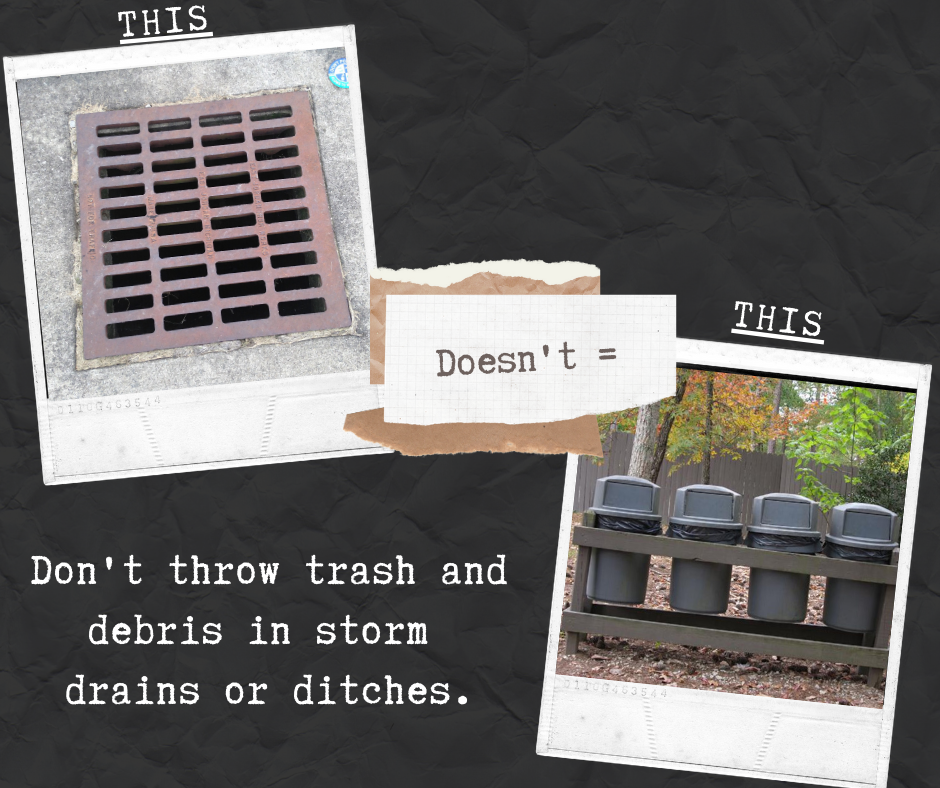Have you noticed the storm drains and grassed ditches along the side of the street as you’re driving? When it rains, water running off our roofs, driveways, sidewalks, and parking lots into our streets flows into these drains and ditches and begins its journey to the nearest waterway. Often this water runs straight into a river or stream. Stormwater picks up oil, other automobile fluids, trash, fertilizer, pet waste, and other pollutants, and is discharged untreated into our streams in many cases. Even when this water passes through a pond or other stormwater feature, pollutants are not entirely removed, making their way to aquatic habitats.
We swim, wade, kayak, and fish in these rivers and streams. Moreover, people rely on water from these water bodies for their drinking water. The more pollutants that go into our streams, the more money we have to spend to cleanse the water for drinking. Reducing pollution is everyone’s job. Keeping stormwater from polluting our streams depends on all of us. Only rain should go down a storm drain or a ditch. So, what can each of us do?
• Sweep grass clippings and lawn care products back onto the lawn.
• Pick up trash.
• Wash your car at a commercial car wash.
• Absorb and clean up auto fluid spills.
• Fix leaking automobiles.
• Use drip pans to catch engine oil and other pollutants while repairing cars.
• Recycle used motor oil.
• Sweep driveways clean instead of hosing them down.
• When walking your pet remember to pick up the waste.
• Record and report illegal dumping down storm drains.
• Don’t dump waste into storm drains or ditches.
• Water your lawn by hand, or adjust sprinklers to avoid over-watering. If any water flows off your lawn, you’re using too much water.
Learn more tips or how to get involved in protecting water resources at Be the Change for Clean Water.

